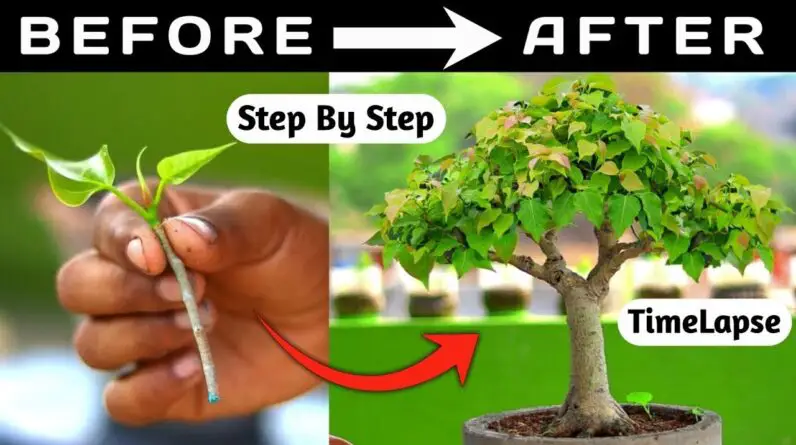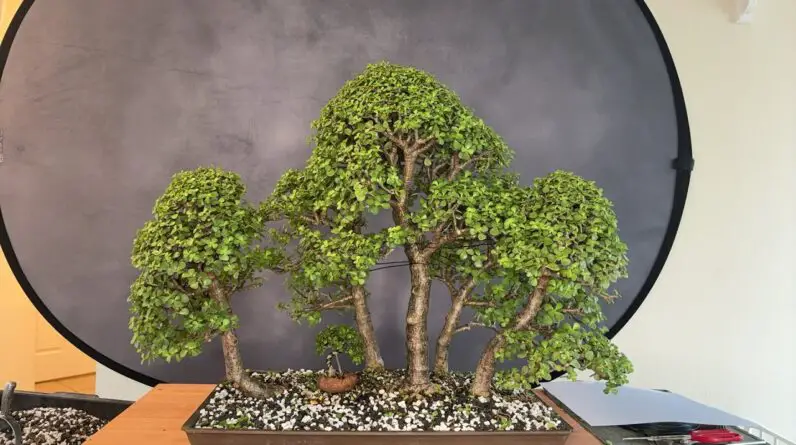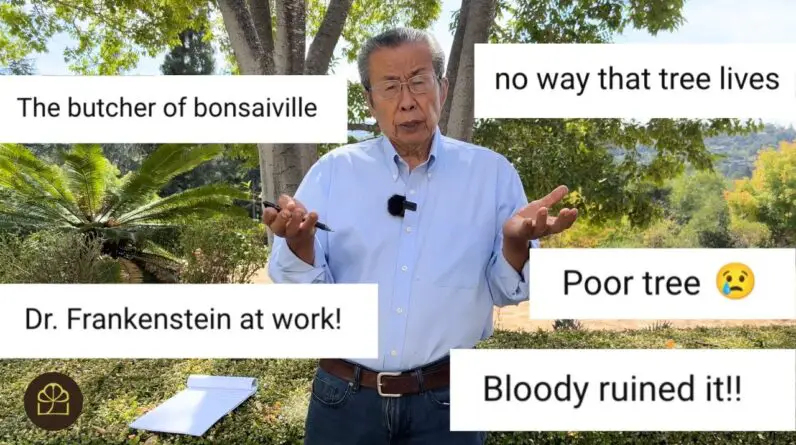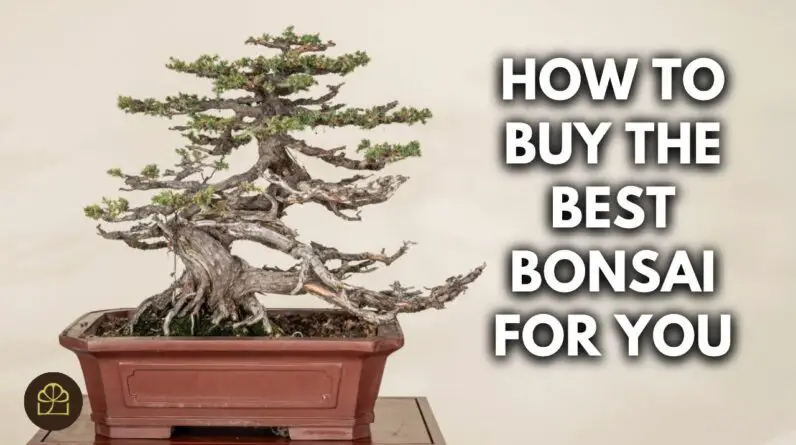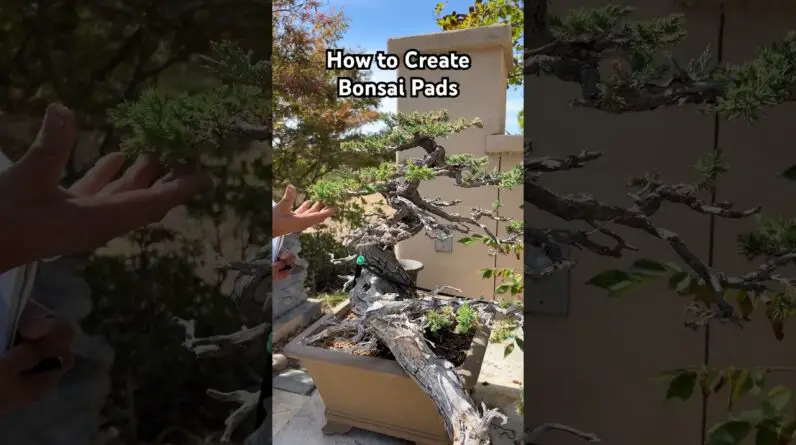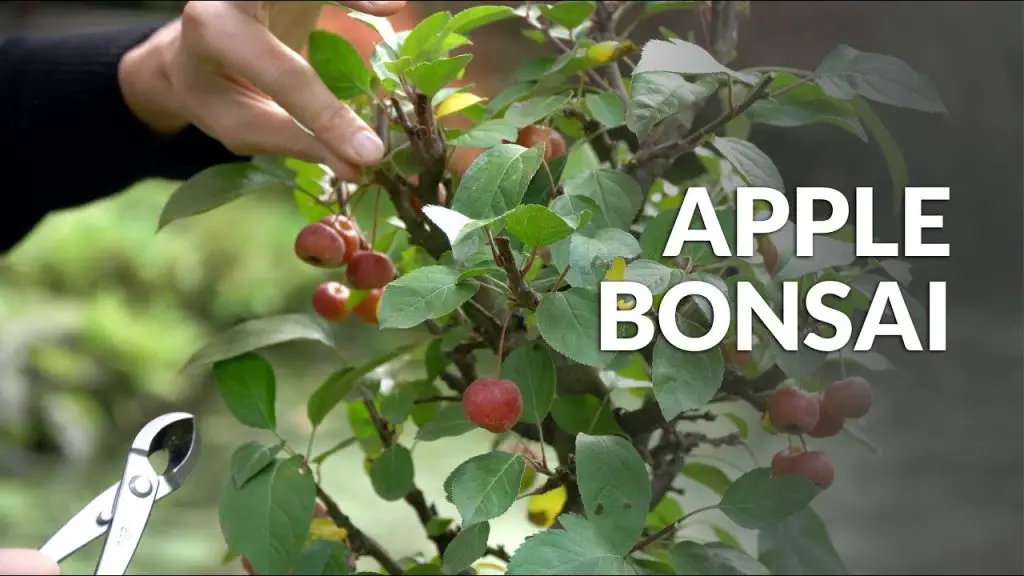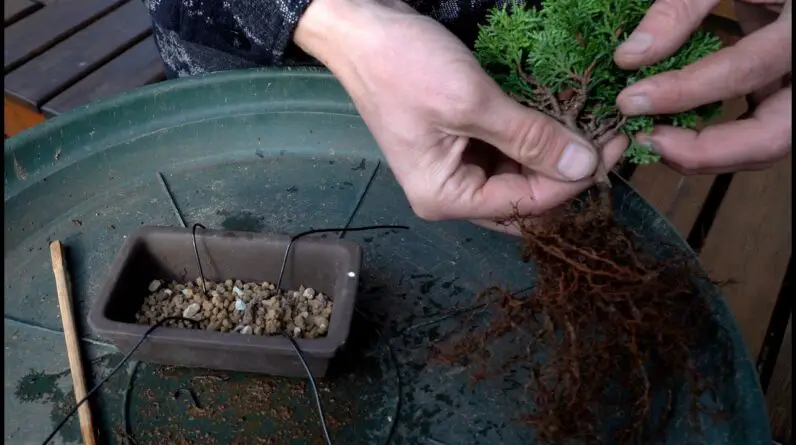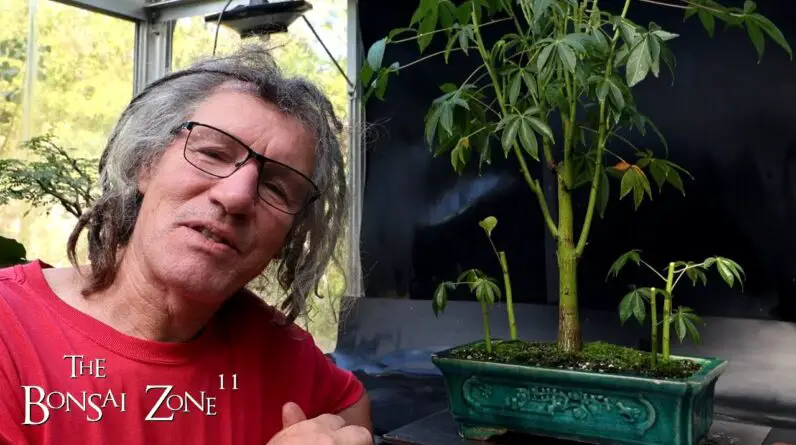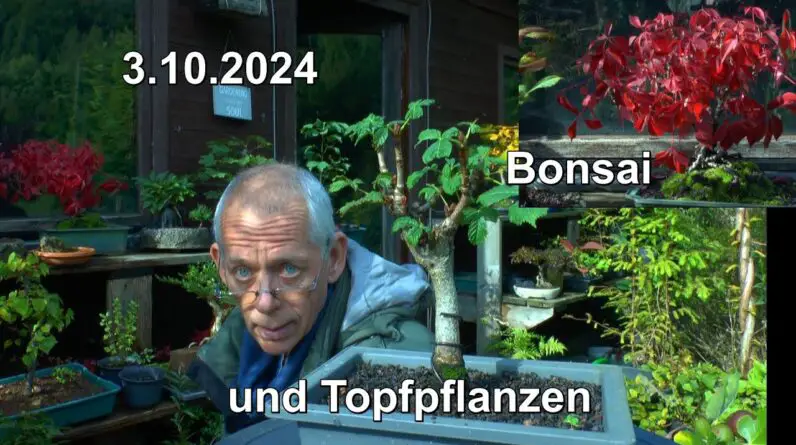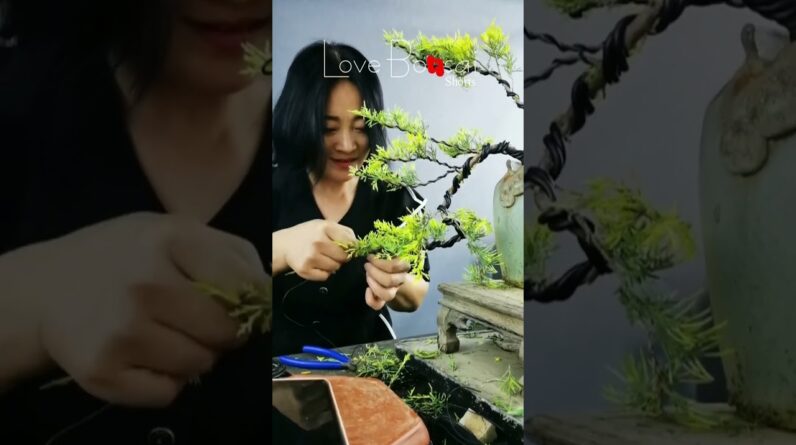Want to discover how to make an Apple bonsai tree? In this video by Bonsai Realm, they show you just how to trim and wire an Apple tree that is around 15 years old. The video was filmed during fall, when the tree was filled with tiny apple trees.
Bonsai Realm is passionate concerning sharing the living art of Bonsai and created this DIY tutorial to help and motivate beginners. This video clip belongs to their on-line training courses, but they supply numerous other cost-free videos also.
So if you want finding out more concerning Bonsai methods, head over to Bonsai Realm’s site!
In the video, they describe the procedure of trimming and electrical wiring this Apple bonsai tree. They make use of tiny pruning shears, pliers, and wire cutters. The leading branch is the first to be cut, and afterwards they concentrate on two thicker branches to attain the desired silhouette.
They show the significance of a 360-degree strategy when cutting and wiring to stay clear of any kind of dead angles. After the pruning and circuitry, the tree looks a lot more refined and well balanced. With normal upkeep, this tree will certainly remain to prosper and expand new branches in the upcoming springtime. If you intend to find out more about trimming, circuitry, and repotting methods, think about signing up with Bonsai Realm’s online training courses and gain access to professional support and the possibility to ask the teachers concerns straight.
Apple Bonsai Tree: An Introduction
Welcome to the globe of apple bonsai trees! Producing and growing a mini apple tree can be a gratifying and meeting leisure activity. Not only do these bonsai trees provide a beautiful visual, yet they likewise use the opportunity to grow your very own fruits in a tiny and workable room.
In this extensive write-up, we will certainly lead you through the process of selecting the best apple tree selection, gathering the needed materials, expanding the tree from seeds, trimming and circuitry strategies, proper upkeep, potting factors to consider, and the differences in between exterior and interior apple bonsai trees.
Consider the Size of the Bonsai
When picking an apple tree selection for bonsai cultivation, it is very important to think about the ultimate dimension of the tree. Since bonsai trees are implied to be small versions of their larger counterparts, selecting a selection that normally remains small is important. Try to find apple tree ranges that are known for their compact development and smaller stature, such as columnar apple trees or normally dwarf varieties. This will ensure that your bonsai stays in proportion and is easier to handle.
Select a Crab Apple Tree Range
Crab apple trees, with their tiny and vivid fruits, are typically the favored option for apple bonsai farming. These trees normally have more fragile and symmetrical attributes, making them appropriate for bonsai appearance. In addition, crab apple trees are hardy and adaptable, making them less complicated to care for and preserve as bonsai specimens. Take into consideration varieties such as Malus sylvestris or Malus floribunda, which are typically made use of in bonsai farming.
Take into consideration the Climate and Place
Prior to deciding on the apple tree selection for your bonsai, it’s important to take into consideration the climate and location where you plan to expand it. Various apple tree ranges prosper in different environments, so choose a variety that is appropriate to your specific area. Furthermore, remember the quantity of sunlight and temperature requirements of the chosen selection. Many apple trees need full sunlight to thrive, so ensure that your selected location supplies ample sunshine throughout the day.
Select an Appropriate Bonsai Pot
Choosing the right bonsai pot is vital for the wellness and aesthetic appeals of your apple bonsai tree. Look for a pot that is in proportion to the dimension of your tree and complements its general style. Bonsai pots are available in various materials such as ceramic, plastic, or clay. Each material has its own advantages and factors to consider, so select one that fits your personal choices and the certain requirements of your apple bonsai tree.
Obtain Top Quality Bonsai Soil
Top quality bonsai soil is essential for the healthy and balanced development of your apple bonsai tree. The soil needs to give sufficient drain while keeping enough moisture for the tree’s origins. You can acquire pre-made bonsai soil blends that are specifically made for bonsai growing, or you can develop your very own mix by incorporating elements such as Akadama, pumice, and lava rock. Trial and error with various soil blends might be required to find the perfect equilibrium for your apple bonsai tree.
Get Pruning and Electrical Wiring Devices
Pruning and circuitry are important techniques for forming and keeping the type of your apple bonsai tree. To successfully prune and wire your bonsai, you will certainly require a collection of appropriate tools. Some vital devices consist of a scooped branch cutter for specific pruning, bonsai wire cutters for taking care of the wire, and pliers or tweezers for elaborate work. Buy high-grade tools to make certain accuracy and lessen damages to your apple bonsai tree.
Collecting Apple Seeds
Among one of the most satisfying methods to start an apple bonsai tree is by expanding it from seeds. You can accumulate apple seeds from ripe fruits or purchase them from reliable suppliers. Make certain that the seeds are fresh and practical for the very best chances of germination.
Prep work of Seeds for Planting
Before planting the apple seeds, it is very important to prepare them for optimum germination. Beginning by soaking the seeds in water for 1 day to soften the external seed layer. After soaking, remove the seeds from the water and allow them to completely dry for a few days. This procedure assists damage the seed’s dormancy and increases the opportunities of effective germination.
Planting and Germination Process
Once the seeds are prepared, plant them in small pots filled with well-draining bonsai soil. Area the pots in a cozy and bright location, and maintain the dirt consistently wet. Germination usually takes about two to four weeks, depending upon the selection and environmental problems. As soon as the seedlings have actually grown, pick the healthiest ones to proceed expanding as your future apple bonsai trees.
Recognizing Trimming Methods
Trimming is an important aspect of bonsai farming that assists preserve the tree’s size, form, and overall looks. By selectively eliminating branches and foliage, you can attain the preferred type and equilibrium. Learn more about different pruning techniques such as upkeep trimming, branch pruning, and squeezing to keep the health and shape of your apple bonsai tree.
Recognizing the Right Branches to Trim
When trimming your apple bonsai tree, it is very important to identify the branches that need to be trimmed. Try to find branches that interrupt the wanted kind or impede the tree’s total equilibrium. Eliminate any kind of dead, harmed, or undesirable branches to promote healthy growth and stop condition. Speak with bonsai sources or seek assistance from experienced bonsai enthusiasts if you’re uncertain which branches to trim.
Trimming to Achieve Preferred Forming
Trimming is not just concerning maintenance but additionally concerning forming your apple bonsai tree. Usage pruning methods to lead the tree’s growth and accomplish the wanted shape and style. Consider standard bonsai shapes such as formal upright, slanting, or cascade, and adjust them to fit the attributes of your apple bonsai tree.
Preparing the Tree for Wiring
Electrical wiring is an additional essential technique in bonsai cultivation that assists develop and maintain the wanted form and framework of your apple bonsai tree. Prior to using cables, ensure that the branches and trunk are adaptable adequate to be adjusted without causing damages. Younger branches are more flexible and much easier to wire, while older branches might need steady bending in time.
Picking the Right Cord Dimension
Picking the ideal cable size is important to stay clear of damaging the branches of your apple bonsai tree. The cord must be solid sufficient to hold the desired form without cutting into the bark. Select a wire dimension that is around one-third of the thickness of the branch being wired. Copper or aluminum cable is generally utilized, yet make sure it is soft enough to be quickly shaped.
Using Wiring Strategies
To wire your apple bonsai tree, begin by covering the cable at the base of the branch or trunk and then gently spiral it upwards, making certain to preserve a 45-degree angle between the cord and the branch. Be careful not to wrap the cable too securely, as it can limit the tree’s circulation and cause damages. When the wanted form is accomplished, safeguard the cable by twisting completions together or using wire clips. Get rid of the wire after a few months to prevent it from cutting into the bark.
Watering and Moisture Control
Correct watering is critical for the wellness and vitality of your apple bonsai tree. The regularity and amount of water needed rely on different aspects such as the climate, pot dimension, and tree’s growth stage. Water your apple bonsai tree when the top inch of dirt feels dry, making certain that the water gets to the entire root system. Stay clear of overwatering, as it can cause root rot and other fungal conditions.
Fertilizing and Nutrient Demands
Preserving dirt fertility is essential for the healthy and balanced development of your apple bonsai tree. Apply a balanced fertilizer during the growing period to give the required nutrients for optimum development. Usage natural or slow-release fertilizers particularly developed for bonsai trees, following the suggested dose directions. On a regular basis keep an eye on the tree’s action to fertilizing and change the feeding program as necessary.
Bug and Condition Management
Like any other plant, apple bonsai trees can be prone to numerous insects and conditions. Routinely examine your tree for signs of invasion, such as discolored leaves, insects, or unusual development. If any kind of concerns are spotted, quickly take ideal measures to manage and remove the trouble. Think about utilizing natural insect control techniques or speak with experts if needed.
Repotting Frequency and Timing
Repotting is a vital job in bonsai farming that allows for root system health and wellness and total development control. The frequency and timing of repotting depend on various variables such as the age and development price of the apple bonsai tree. As a general standard, repotting is usually done every 2 to 3 years, preferably during the very early springtime before the tree begins proactively growing.
Choosing a Correct Bonsai Pot
When repotting your apple bonsai tree, choose a new pot that is slightly larger than the present one. Think about the aesthetic appeals and total equilibrium of the tree when choosing the pot’s shape and style. Make sure that the pot gives sufficient drain openings and is made from a product that appropriates for bonsai farming.
Transplanting and Root Trimming
Throughout repotting, thoroughly get rid of the tree from its current pot and delicately loosen up the origin ball. Check the origins and trim any broken or excessively lengthy roots. This process, known as origin pruning, helps stimulate new root growth and maintains the tree’s root system portable. After root trimming, place the tree in the brand-new pot, guaranteeing that the origins are evenly distributed and covered with fresh bonsai soil.
Proper Potting Techniques
When potting your apple bonsai tree, usage appropriate techniques to ensure its security and healthy growth. Position the tree a little off-center in the pot to produce a feeling of activity and equilibrium. Protect the tree in place utilizing bonsai wires or rocks, and load the continuing to be area in the pot with bonsai soil, ensuring that no air pockets are left. Water the newly potted tree extensively and check its healing throughout the complying with weeks.
Benefits and Factors To Consider for Outdoor Bonsai
Growing an outside apple bonsai tree allows it to experience the natural transforming seasons, which can enhance its overall beauty. Outdoor bonsai trees generally have more space to grow and develop a stronger root system. However, outdoor bonsai trees require careful consideration of climate and weather conditions, protection from extreme temperature fluctuations, and regular exposure to sunlight.
Benefits and Challenges of Indoor Bonsai
Growing an apple bonsai tree indoors provides more controlled conditions and allows enthusiasts in colder climates to enjoy bonsai cultivation year-round. Indoor bonsai trees require careful attention to temperature, humidity, and lighting conditions. Supplemental lighting may be necessary, especially during the winter months when sunlight exposure is limited. Additionally, indoor bonsai trees may require more vigilant pest and disease management due to the controlled environment.
Creating and caring for an apple bonsai tree is a rewarding and fulfilling endeavor. With proper knowledge and techniques, you can enjoy the beauty of nature in a miniature form and even grow your own miniature apples.
By choosing the right variety, gathering the necessary materials, mastering pruning and wiring techniques, maintaining proper care, and selecting the right pot and location, you can cultivate a stunning apple bonsai tree that brings joy and tranquility to your surroundings.
Happy bonsai cultivation!
[sspostsincat category=”Shohin Crabapple”]


